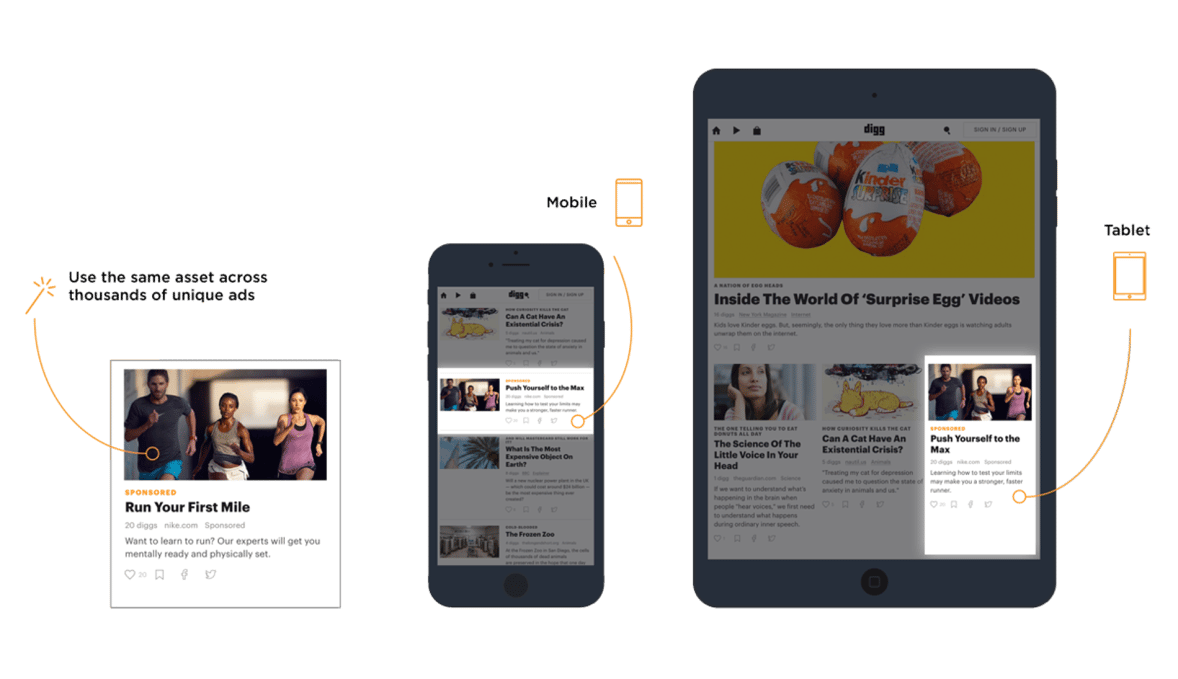In a world filled with SEO, content marketing, and display ads, it’s hard to keep up. We totally get it, but faster than you can say “Siri, what is Native Advertising?” we’ll get you an answer! Okay, maybe not that fast, but you catch our drift.
So what is native advertising?
The quick and dirty answer: Native Advertising is a form of paid advertising where the ad matches the form and function of the content on the platform on which it appears. Of course, how can you really get to know Native Advertising in just one sentence? It’s like a first date . . . You might need to dig a little deeper to get to know the person (or ad) behind the name. Second date, here we come!
DON'T GO UNNOTICED
Most companies today are producing more content than ever before. Sadly, a lot of that content--whether or not it’s high quality content--goes unnoticed, never to be seen by the intended audience. Totally frustrating. Radio silence from consumers can sometimes be due to ad placement. A lot of times, though, unresponsiveness results from the ad looking too much like an ad, and if we’re being honest, consumers just don’t like ads thrown in their faces. We don’t blame them!
That’s where Native Advertising comes in. It’s a smarter, more powerful way to distribute content to interested prospects. By blending into the look and feel of the content around it, Native Ads allow for the brand to reach new people outside of the normal channels in a much less invasive way. This not only extends the lifespan of the content, but also continues to drive traffic back to your site longer than most content marketing by generating new interest in your brand.
WHAT IS CONSIDERED NATIVE ADVERTSING, YOU ASK?
You’ve probably seen examples of it before—the sponsored Twitter post in your feed, the promoted story at the end of an article on usatoday.com, and even the advertiser-funded video following the video you watched on YouTube. Regardless of the platform or device, Native Advertising allows brands to reach new audiences and re-message existing readers or viewers by matching the unique look and feel of individual sites.
In order for Native Advertising to be effective and engaging, there are a few rules of thumb to follow:
- The ad must fit into the user experience by matching the editorial style and design of the media outlet it is placed on.
- The ad needs to be labeled as sponsored content (because no one likes to feel deceived or misled).
- The ad should be informative and/or entertaining to capture new audiences.
We think one of the coolest things about going Native is that the ads are less annoying. Really, can you think of anyone who wouldn’t prefer seeing meaningful, relevant sponsored content in-feed over an ad that looks out of place or takes over the page? Don’t just take our word for it—but really, you can—studies show that consumers look at native ads fifty percent more frequently than display ads. Bingo!
BOTTOM LINE:
Native Advertising is not only a useful way to position a brand and drive action, but it’s a powerful marketing tactic because the ads don’t demand attention. Rather, they build trust with would-be customers and re-message existing readers, increasing the likelihood the ads will be watched or read.
This post is about: native advertising, native ads, native ad platforms, native ad campaigns, brand awareness, programmatic advertising, programmatic native advertising, consumer experience, customer engagement, sponsored content, branded content, content promotion, and content marketing.
***
We love feedback! Please comment below.


